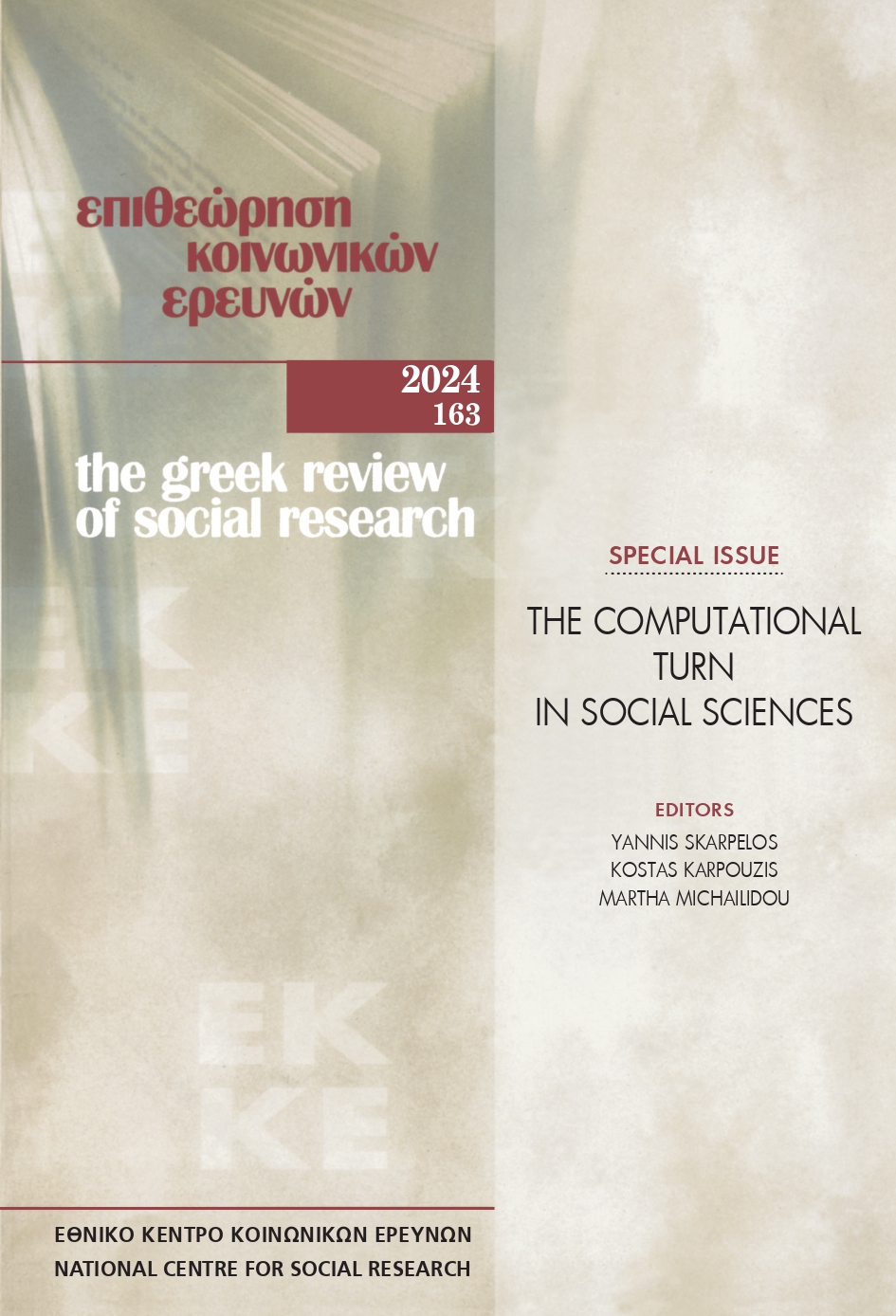Ένας αλγόριθμος για τη μέτρηση του χαρίσματος των Ελλήνων/-ίδων δημοσιογράφων

Περίληψη
Το X, πρώην Twitter, θεωρείται από τους δημοσιογράφους ως ένα πολύτιμο εργαλείο για την αλληλεπίδραση σε πραγματικό χρόνο με τους ακολούθους τους. Ειδικά, στην περίπτωση των δημοσιογράφων του πολιτικού ρεπορτάζ, ο βαθμός επιδραστικότητας και πειθούς τους έχει βαρύνουσα σημασία. Στην παρούσα εργασία ασχολούμαστε με τον προσδιορισμό του πολιτικού χαρίσματος των δημοσιογράφων. Πιο συγκεκριμένα, προτείνουμε έναν αλγόριθμο που βασίζεται στη μέθοδο Analytic Hierarchy Process για τη μέτρηση του πολιτικού χαρίσματος των δημοσιογράφων. Αριθμητικά αποτελέσματα σε δύο διαφορετικά σενάρια χρήσης έδειξαν ότι ο προτεινόμενος αλγόριθμος μπορεί να προσδιορίσει με επιτυχία το χάρισμα υπό την έννοια ότι προσαρμόζει την επιδραστικότητα προς μια περισσότερο πολιτική κατεύθυνση.
Λεπτομέρειες άρθρου
- Πώς να δημιουργήσετε Αναφορές
-
Kaimaki , V., Ampeliotis, D., Sgora , A., Konidaris , A., & Polykalas, S. (2024). Ένας αλγόριθμος για τη μέτρηση του χαρίσματος των Ελλήνων/-ίδων δημοσιογράφων. Επιθεώρηση Κοινωνικών Ερευνών, 163, 93–123. https://doi.org/10.12681/grsr.38504
- Ενότητα
- Άρθρα

Αυτή η εργασία είναι αδειοδοτημένη υπό το CC Αναφορά Δημιουργού – Μη Εμπορική Χρήση 4.0.
Οι συγγραφείς των άρθρων που δημοσιεύονται στην Επιθεώρηση Κοινωνικών Ερευνών διατηρούν τα δικαιώματα πνευματικής ιδιοκτησίας επί των άρθρων τους, δίνοντας στο περιοδικό το δικαίωμα της πρώτης δημοσίευσης. Άρθρα που δημοσιεύονται στην Επιθεώρηση Κοινωνικών Ερευνών διατίθενται με άδεια Creative Commons 4.0 και σύμφωνα με την άδεια μπορούν να χρησιμοποιούνται ελεύθερα, με αναφορά στο/στη συγγραφέα και στην πρώτη δημοσίευση για μη κερδοσκοπικούς σκοπούς.
Το Εθνικό Κέντρο Κοινωνικών Ερευνών διατηρεί το δικαίωμα να δημοσιεύει, να αναπαραγάγει, να παρουσιάζει στο κοινό, να διανέμει και χρησιμοποιεί άρθρα που δημοσιεύονται στην Επιθεώρηση Κοινωνικών Ερευνών σε οποιοδήποτε μέσο και μορφή είτε μεμονωμένα είτε ως μέρη συλλογικών έργων, για όλο τον χρόνο διάρκειας προστασίας της πνευματικής ιδιοκτησίας και για όλες τις χώρες του κόσμου. Αυτό περιλαμβάνει ενδεικτικά και όχι αποκλειστικά το δικαίωμα δημοσίευσης των άρθρων σε τεύχη της Επιθεώρησης Κοινωνικών Ερευνών, αναπαραγωγής και διανομής μεμονωμένων αντιγράφων των άρθρων, αναπαραγωγής ολόκληρων των άρθρων σε άλλη έκδοση του Εθνικού Κέντρου Κοινωνικών Ερευνών, καθώς και αναπαραγωγής και διανομής των άρθρων ή περίληψης αυτών με χρήση πληροφορικού συστήματος αποθετηρίου.


